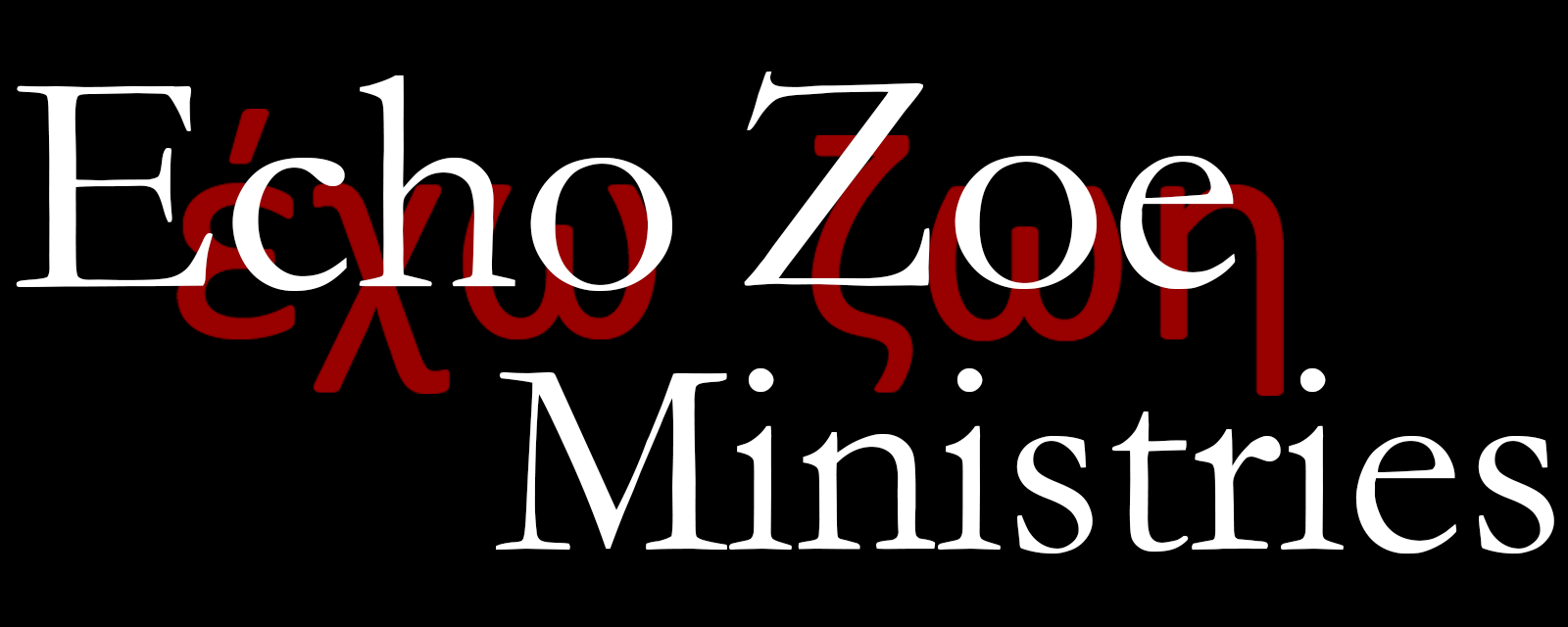 Lyndon Unger is a pastor, teacher, and blogger at Watch Your Life and Doctrine Closely…, and recently spoke on the Renewal Movement at the Last Days Bible Conference in Calgary, Alberta, Canada. The first session of that conference in which he spoke was on the History of the Renewal Movement, and our podcast episode this month is further discussion of the topic.
Lyndon Unger is a pastor, teacher, and blogger at Watch Your Life and Doctrine Closely…, and recently spoke on the Renewal Movement at the Last Days Bible Conference in Calgary, Alberta, Canada. The first session of that conference in which he spoke was on the History of the Renewal Movement, and our podcast episode this month is further discussion of the topic.
Podcast: Play in new window | Download (Duration: 1:25:56 — 39.4MB)
Subscribe: RSS | Subscribe to Echo Zoe Radio
Outline of the Discussion
- Growing up in northern British Columbia, Lyndon's church kept growing as other churches in the area split, and people would come to his church. This exposed him to an eclectic mix of views in the church, including charismaticism.
- He was further drawn into investigating and warning about the renewal movement around the time of the Strange Fire conference held at Grace Community Church (John MacArthur) in 2013.
- Lyndon stole the term “Renewal Movement” from Jack Hayford, and uses it to avoid some of the confusion of definitions, as well as the “loaded” aspects of more traditional (or common) names to refer to the collection of movements that fall under Lyndon's banner of “Renewal”. Renewal refers to the renewal of the gifts of the Spirit.
- Lyndon went back as far as the contemporaries of Martin Luther for history of Renewal. He mentions some of the Anabaptists.
- Those in the Renewal look to Tongues as the big sign of their movement. Lyndon has, thus far, traced Tongues speaking as far back as the 1650s and the Quakers.
- George Fox discouraged tongues, and was nervous about it.
- The Quakers rejected Baptism and Communion.
- Wesley rejected and spoke/wrote against the Quakers.
- A sect of Jansenists called “the convulsionaire” followed the Quakers, and was located in France.
- In 1864 the Seventh Day Adventists had massive outbreaks of tongues speaking when they first started.
- The early Pentecostals (Asuza Street) traced their history through many clearly heretical groups and movenments.
- Cane Ridge was an early 19th century tent revival movement in Kentucky where people would “get the jerks”. It was very similar to the Brownsville revival of the early 1990s.
- Because tongues-speaking is such a definitive sign of salvation in the eyes of the renewal movement, the Gospel is never shared with people who demonstrate tongues-speaking. This makes their view on tongues a Gospel issue (very serious).
- Asuza Street was started after Charles Fox Parham's “discovery” that the sign that a person had been baptized in the Holy Spirit was tongues speaking. Prior to that, baptism of the Spirit was seen as empowerment to service or missions. Prior to Asuza Street, Parham had briefly started and run a Bible college in Topeka, Kansas. After that closed, he went on the road, moving to Texas. One of his students, a black man named William Seymour traveled with him, and was invited to a Holiness church in Los Angeles. The pastor wanted to go off and do missions work, and said she had been baptized in the Spirit to be enabled to do so. Seymour said she wasn't baptized in the Spirit because she didn't speak in tongues, and was fired within a week of arriving.
- Asuza Street started when Seymour and some friends rented a church building at 312 Asuza Street in Los Angeles in which they'd hold Bible studies together. They called their new group “The Apostolic Faith Movement,” a name they stole from Charles Parham.
- This group saw themselves as the restoration of the faith delivered by the Apostles. They wanted nothing to do with mainline Christianity, which they claimed had departed from the Faith.
- Parham arrived and rejected the antics of Seymour and the people at Asuza Street. Seymour responded by condemning him, kicking him out, and shackling the door.
- Scandals popped up at Asuza Street involving money, and the suggestions of illicit relationships dots their history.
- From Asuza Street, the movement expands to the classic Pentecostal churches: Assemblies of God, Pentecostal Holiness Church, International Church of the Foursquare Gospel, etc. Things calmed down through the two World Wars and the Depression.
- In 1947 the Faith Healing and Latter Rain movements started. William Branham and Orel Roberts were pioneers in these movements. This period of the Renewal Movement continued until about 1965.
- In 1965, William Branham died, and Johm Wimber first spoke in tongues, ushering in what would become the Calvary Chapel movement.
- The Catholic Charismatic movement started in 1966. The current Pope, Francis, is a Catholic Charismatic, and has reached out to Kenneth Copeland and others.
Scriptures Referenced
- Titus 1
- 2 Peter 2
Additional Resources
- Lyndon's lectures at the 2015 Last Days Bible Conference
- Entire 2015 Last Days Bible Conference
- The Strange Fire conference
- Authentic Fire Review
Related Episodes
- Justin Peters: Exposing the Word-of-Faith Movement
- Justin Peters: Word-of-Faith Revisited
- Sandy Simpson: The New Apostolic Reformation
- Ryan Habbena: Examining Tongues – Part 1
- Bob DeWaay: Bill Johnson, IHOP, & Ancient Heresy Reborn
- Ryan Habbena: Examining Tongues – Part 2
- Eric Douma: Who is an Apostle?
- Sandy Simpson: The New Apostolic Reformation – Part 2
- Cameron Buettel: Hillsong




